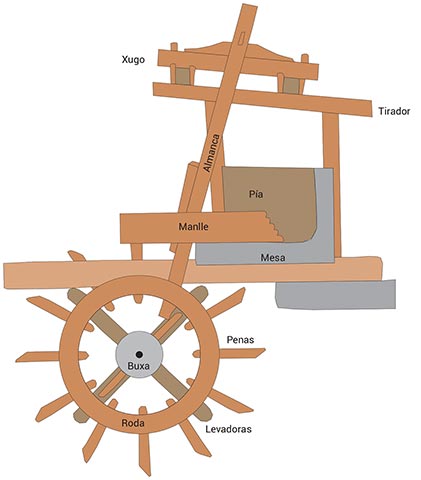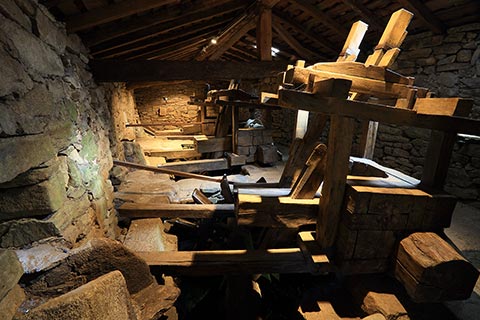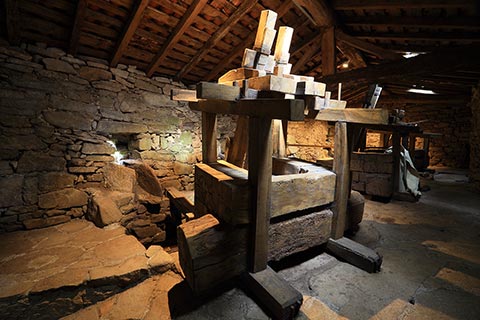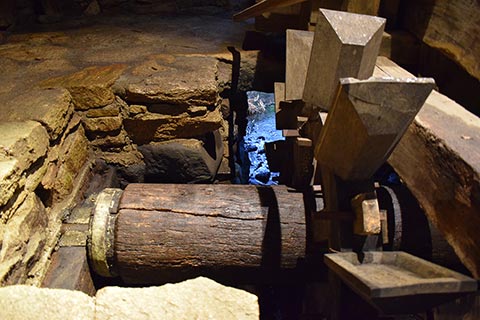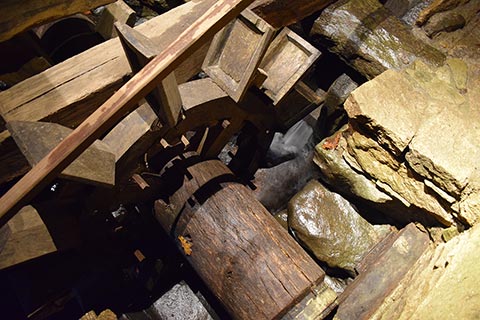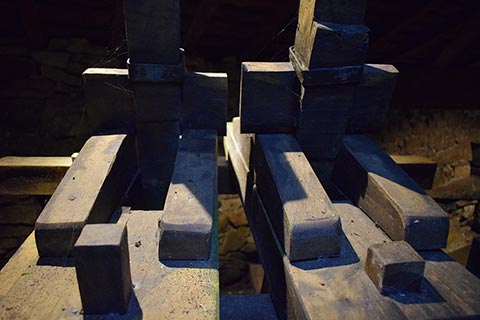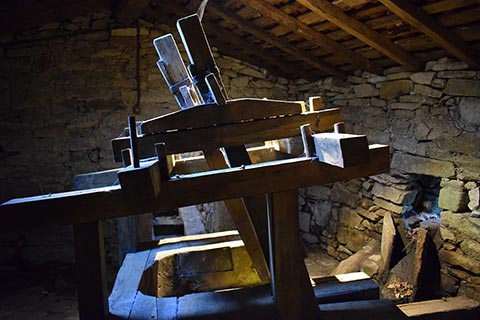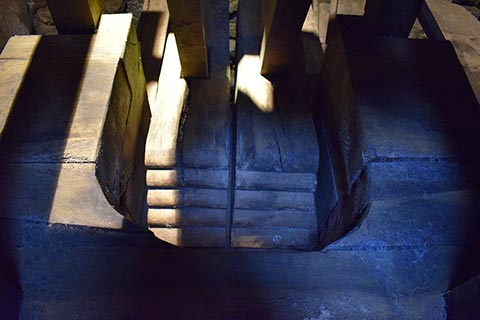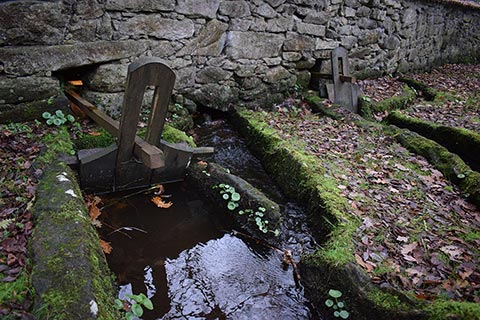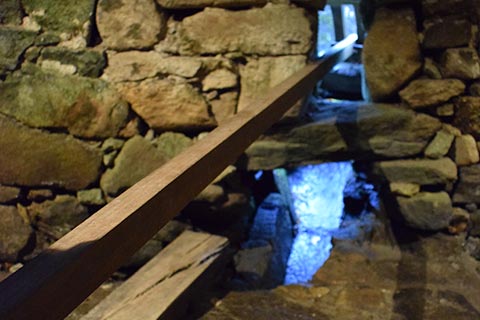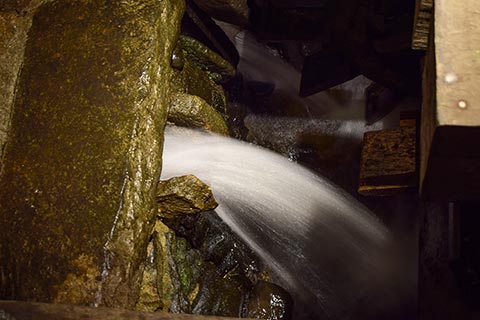A fulling mill is an authentic work of popular engineering despite its simple appearance. Its mechanical parts are made entirely of wood, lacking nails or pieces of iron in order to prevent the formation of oxides or the cloth from tearing. It is formed by a large number of pieces with many names, making up a rich lexicon. However, there are three main elements: the wheel, the mallets and the table.
The wheel or rodicio is similar to the one present in mills, but in the case of Mosquetín it is vertical and inside the building. It has a series of concave blades, the penas, which are what make the wheel move when in contact with water. The movement of the wheel is transmitted to the shaft, which is a cylindrical piece of pine. On the shaft there are other protruding wooden parts, the levadoras, which activate the mallets, lifting them alternatively.
The mallets are called manlles and constitute another important piece. They are lifted by the protruding wooden part, and then fall with their own weight onto the blankets placed on the pía (the cavity). The beating of the mallets is rhythmic and alternating. When one hits the blankets, the other is already up and about to go down.
The third key piece is the table. It is the structure that holds the mallets and contains the pía, the cavity in which the pieces of wool are placed for the mallets to pound them.


